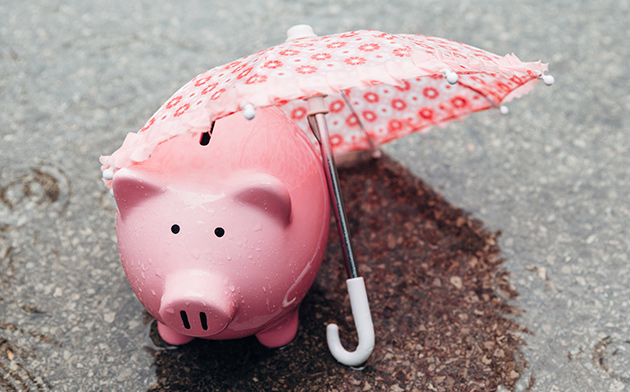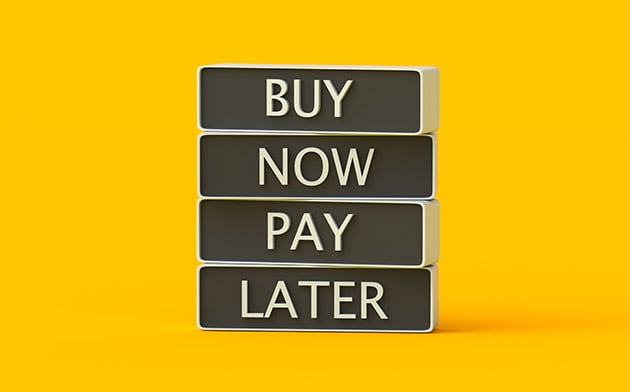You’ve likely heard the saying, “Save for a rainy day.” But what do they really mean by “rainy day”?
 Not to be confused with an emergency fund, a rainy-day fund is designed to cover smaller, unexpected expenses (think: car repairs, replacing an appliance, vet bills, etc.) without affecting your monthly budget.
Not to be confused with an emergency fund, a rainy-day fund is designed to cover smaller, unexpected expenses (think: car repairs, replacing an appliance, vet bills, etc.) without affecting your monthly budget.
The actual saving part can be a challenge, but here are three easy and painless ways to build and maintain your own rainy-day fund:
- Start small. Saving for “down the road” isn’t always top of mind, especially if money is tight. Behavioral economists even have a term for it—“present bias,” the tendency to focus on the here and now rather than things that will impact our future.
If you’re having a hard time breaking your present bias, start small by moving a few bucks from each paycheck into your savings account. Or match the amount of a typical small purchase (your $5 latte, for example) with a small deposit each week. (You definitely don’t have to give up your lattes!)
Once you become comfortable with this approach, consider siphoning off a small percentage of your income by automatically transferring money from your checking to your savings account. Before you know it, you’ll have extra money for a rainy day (and with regular, small, automatic transfers, you won’t even miss it). - Choose the right savings account. In an effort to balance the national economy, the Federal Reserve increased the benchmark interest rate multiple times the past couple years. What does this mean for you? Many financial institutions are offering attractive high-yield savings accounts to help grow your savings as quickly as possible. Bottom line, it’s an ideal time to save.
But not all savings accounts are created equal. As you consider where to put your money, consider these factors:
- Interest rates. The higher the rate, the more you earn. And the more you earn, the more your savings compounds.
- Fees. Many savings accounts are fee-free, but be sure to read the fine print carefully so you’re not surprised by overdraft, account inactivity, or balance-requirement maintenance fees.
- Accessibility. Would you be able to access your account anytime, anywhere? SELCO makes it easy to view your balance and recent transactions, set up transfers, make mobile check deposits, and so much more.
- Pay yourself back. Once your rainy-day fund is established, you can use it to cover unexpected expenses without dipping into accounts that are there to cover expected ones. But don’t forget to replenish your rainy-day fund after tapping into it. A strong interest rate will keep what’s left growing, but aim for a level that provides the peace of mind that the next unexpected expense doesn’t come at the expense of your other accounts.
A rainy-day fund is there for when you need to pay for something truly unexpected. Keep in mind, as your needs change, the amount needed to keep the fund where you want it may change as well. Small steps like these can cover a great distance (and you can take them without sacrificing those small purchases that make life enjoyable.)


